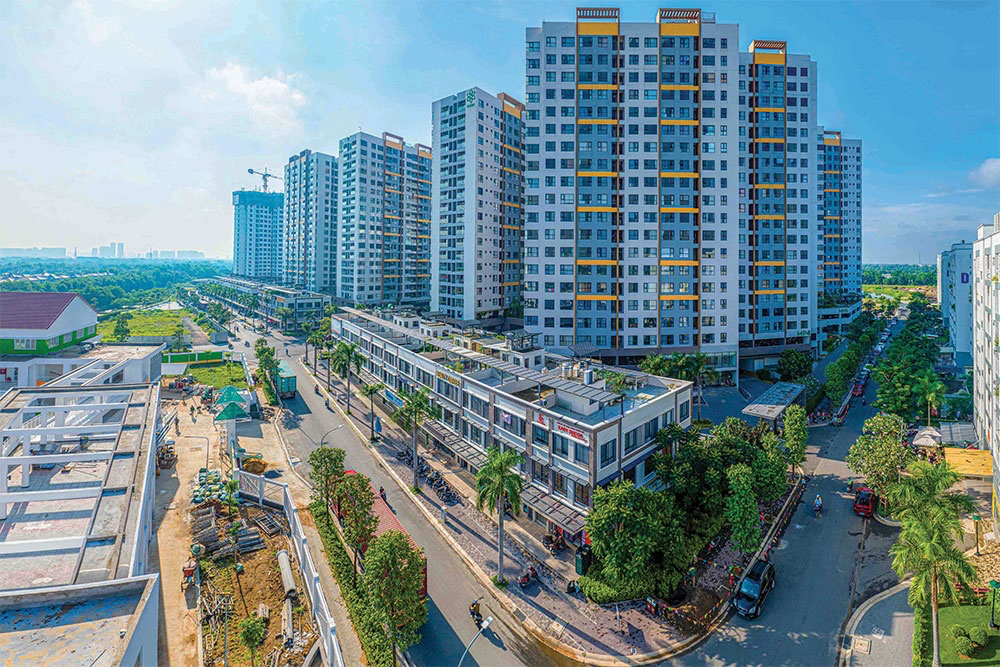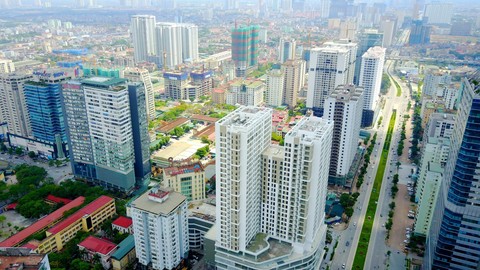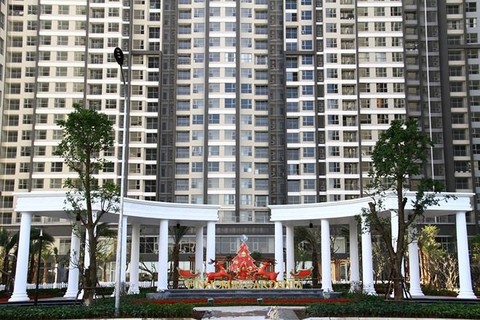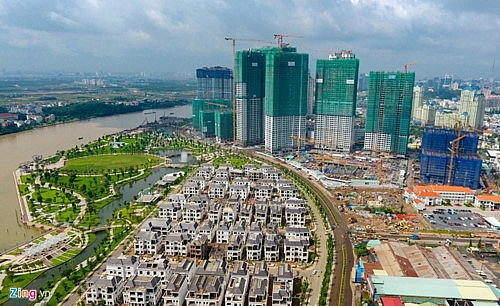Tighter bank credit to ensure bubble-free market
Tighter bank credit to ensure bubble-free market
The State Bank of Vietnam has recently ordered commercial banks to lower the percentage of short-term capital used for mid- to long-term loans from 50 per cent in 2017 to 45 per cent in 2018 and 40 per cent in 2019. This new policy is not to curb the growth of real estate credit, but to steer the market onto a more sustainable route.
Why does real estate credit have a bad name?
Nowadays, the real estate sector is still believed to be a non-manufacturing industry a misconception that hurts the entire sector. In reality, real estate is part of the input in any manufacturing process, as well as an important product for any consumer. To do business, most companies still need factories, offices or stores to manufacture their products and interact with buyers. The prerequisite is owning some sort of real estate.
For consumers, everyone needs a place to live, or even two or more places to relax and invest. As a result, the real estate sector should be considered part of the manufacturing industry, as well as being a consumer product.
Besides, real estate is also an important collateral to be used for taking up bank credit for business or personal purposes. When the real estate sector is doing well, the value of property props up and it makes applying for bank loans much easier. If more businesspeople and individuals can access credit, consumption and investment will grow and bring the economy forward. As a result, a real estate product not only brings direct benefits to the owner, but can also be an important asset. This is why the demand for real estate is always high.
With all of this in mind, why are we constantly worried about credit for the property sector?
The answer is this: real estate is a must-have product for anyone, which means it guarantees demand at any time. However, it is usually expensive, which lowers liquidity. When supply in the real estate market overcomes demand and the payment abilities of the market, a bubble will burst and create lingering problems for the economy.
It is true that when the economy is doing well, the demand for real estate increases, driving up the price of property products. When prices go up, the value of each real estate product will also become higher, fuelling the demand even more. This is the beginning of a dangerous bubble.
Once prices get too high, liquidity suffers and the number of buyers who can afford these products will decline. Supply then overrides demand, which can cause a burst in the sector itself and domino effects in other industries, especially the banking sector. Commercial banks are the most vulnerable since they are both creditors of real estate projects and most bank loans are secured by real estate.
All in all, real estate is an important sector for any economy, and sustainable growth in real estate is crucial to the overall well-being of the economy. This sector is also a risky one, prone to bubbles that can damage the entire economy of any country.
With this in mind, legal restrictions on real estate credit do not mean that banks should not pour capital into real estate projects. Instead, it should be viewed as an effort to steer the real estate market onto a more sustainable growth path, preventing the formation of bubbles when the market heats up.
Pulling the rein
Although the Vietnamese economy recorded strong GPD growth in 2016 and 2017 (6.21 and 6.81 per cent, respectively), the growth rate of the real estate sector was only 4 per cent in 2016 and 4.07 per cent in 2017. If we include the construction sector in the figures, the growth rate was still only 7.2 and 6.61 per cent, below the annual goals of those years. This means the market remains free of any bubble.
Credit for the real estate market, as of November 2017, went up by 8.56 per cent year-on-year, lower than the growth rate of all bank loans. Real estate credit took up 6.53 per cent of all loans issued by commercial lenders. If we include the loans for daily needs related to buying a house, then this figure goes up to 8.65 per cent. This is a 23 per cent increase against January 2017.
We can see that in 2017 commercial banks issued various loans to help consumers purchase homes, besides pulling the rein on real estate credit to make sure that the sector is free from any dangerous bubble.
Market stability in 2017 is an important catalyst for another steady year in the property sector. The Vietnamese economy is expected to continue its strong growth in 2018, which forecasts on-going demand for real estate. Once again, it should be emphasised that a sustainable real estate sector is vital to rev up the economy.
Vietnam’s monetary policies will ensure that the real estate sector gets every help it needs to expand, without growing too fast and encountering a bubble. This is a very important point to remember for policymakers.
These are the factors behind the State Bank of Vietnam’s decision to reduce the percentage of short-term capital used for mid- to long-term loans to 45 per cent in 2018 and 40 per cent in 2019. This new policy targets to promote sustainability and healthy, bubble-free growth in the local real estate market.






















